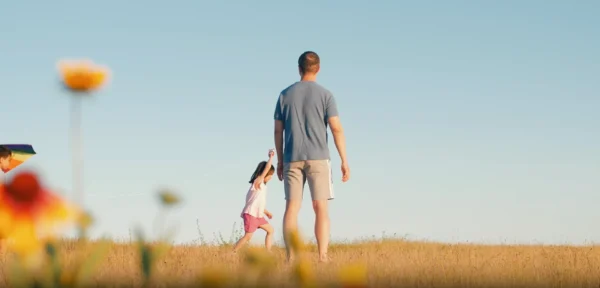While it’s getting on for a decade since the pensions annual allowance was significantly reduced, we are still seeing examples, particularly in the case of high earners, of those who have not adapted their financial plans to best accommodate the new limits.
The annual allowance is a cap on the amount that can be contributed to your pension each year while still receiving tax relief, and is based on your earnings. It’s worth reminding ourselves of how steeply the annual allowance fell in 2011/12, when the proposals were introduced. Having been steadily rising and reaching a peak of £255,000 in 2010/11, it fell to a maximum of £50,000 in the following year. This amount was reduced further in the tax year 2014/15 to £40,000, where it remains. Any pension payments you make over the £40,000 limit will be subject to income tax at the highest rate you pay.
Additionally, in 2016 a tapering of the allowance was introduced where those earning more than £150,00 would see their allowance begin to reduce at a rate of £1 of annual allowance (starting at £40,000) for every £2 of income, reaching just £10,000 once the tax-payer earns £210,000 or more.
Many high earners who find themselves in this situation are understandably keen to seek ways around the issue. Some fall back on their properties, their primary residence, as a default ‘pension scheme’, with the idea that they’ll downsize and release all this value when they need it in the years ahead. Let’s look at an example:
To anyone in these circumstances, this might seem like an attractive option relative to the stringent pension annual allowance restrictions. However this is, at best, a default position, often the result of not rigorously thinking through the reality of the situation, and allowing the paper value of their property to lull them into a false sense of security.
Anyone genuinely planning to use their primary residence as a future pension needs to be aware that this comes with a number of risks which, if known up front, would most likely stop them from being seduced by the idea in the first place.
Counting the Costs
As an investment, a property is a costly option, on a number of fronts.
First, there are the mortgage payments and interest rates. Fluctuating interest rates can make a significant difference to the size of monthly payments, particularly over the long periods of time associated with a mortgage and one of the size shown in our example. What’s more, early in a mortgage term, a large proportion of the monthly payment goes towards servicing the interest, which means little of this is going towards your future.
It’s also worth noting that the impact of interest rates often gets forgotten in weighing up the pros and cons of property as an investment. People might say they bought a property for £300k and sold it for £600k, and tell themselves they’ve doubled their money. But if they have paid £100k in interest along the way then this is not the case. For some reason, we often forget to take account of interest rates when it comes to property.
Then there are the upkeep and maintenance costs. All properties need to be maintained over time, and this comes with a cost. Some of these costs might increase the value of your home, but not all of them. Structural work or repairing general wear and tear are all part and parcel on which you may not see a return on your investment.
There’s also the issue of taste. Any work you do on the property, cosmetic or structural, in the hope of increasing its value will depend on how it is viewed by a potential buyer. You may like your neon pink kitchen suite, but your potential buyer might see it as grounds to ask for a reduction in the asking price. The value you think you’re adding might have the opposite effect on a prospective buyer.
Don’t forget the additional general costs of running a property, like council tax and buildings insurance. These need to be included in the costs of the investment, if this is how you are viewing the property. Again, it’s easy to forget or compartmentalise costs like this as separate from your pension planning, but a true reckoning-up should include them.
Making the Leap
When the time comes to sell the property, the costs continue – and not just on the financial front. Often, a wrench like this will take an emotional toll too, which, in the worst case scenario, could result in the plan being scrapped altogether.
Looking at the financial first, anyone deciding to fall back on their property as a better investment option than a pension is effectively deciding to give themselves financial complications later in life. When they want to sell their property and downsize, this comes with the necessary costs of Stamp Duty, legal expenses and estate agent bills, which again will all need to be factored into their planning and recognised as costs of the investment.
Releasing the value in the property is also dependent on a healthy property market. But markets can fluctuate or stagnate. Who’s to say there won’t be a dip or a slowdown in the market when you need to release the value? Property is an illiquid asset. If you can’t find a buyer, all the value remains on paper and not in your bank account. It only takes a small change in the property market to transform your pension pot into a liability and leave your retirement plans stuck on the starting blocks.
Emotional Ties
On the emotional front, in many cases, when faced with the reality of upping sticks and moving on from the house they have invested money and time in perfecting, many people find they can’t bring themselves to leave. When it comes to the crunch, the emotional pull of the property prevents them from making the move, which then blows all their pension plans out of the water.
For people who are able to make the leap, the benefits of downsizing are often not as clear-cut as they imagined when they hatched the plan all those years ago. Daniel and Louisa in our example have a £2 million house – are they really going to comfortably and happily move to a £500k property, which is roughly what they would need to do if they were to free up enough income to live on? Similarly, it’s also common for people to move to a smaller property but in a nicer area, which ends up eating into or using up the surplus cash they envisaged they’d create.
Another mistake we see people make when it comes to putting their plans into action is the double-counting of the money they think they will make from selling their property. In their informal planning process (which often exists only in their own head and insulated from any realistic and rigorous interrogation) they might have earmarked the money to not only create a pension income but also to pay off their debts and travel the world, when in actuality the amount will only satisfy one of these ambitions. You can only spend the money once, but it’s easy to count it two, three or more times over.
The Alternatives
So, what are the alternative options open to Daniel and Louisa in these circumstances?
Firstly, it’s worth noting that even high earners still have some pension annual allowance that they should use, even if it is the minimum of £10,000 per year. Turning your back on this doesn’t make financial sense, even if the allowance is lower than you might have liked. Additionally, even without the tax relief, a pension scheme is still a good long-term investment. In comparison with a property, it comes with significantly lower running costs and, when correctly invested, can provide a far more predictable source of retirement income.
Making full use of their ISA allowance is another opportunity for the couple to save, tax-free, for the future. Currently, the annual allowance is £20,000 per individual and this can be put in a cash ISA or a stocks & shares ISA, amongst a number of further ISA options. Daniel and Louisa could make use of £40,000 of tax-free allowance between them.
They could open a General Investment Account (GIA), which is a simple way to hold their investments. GIAs are different from ISAs in that there is no limit on how much can be invested. They don’t come with the same tax-efficient benefits of an ISA, however there are further tax-free allowances the couple could use in this situation.
For example, most people – even higher earners – don’t use their annual Capital Gains Tax (CGT) allowance of £12,000 per person. For example, let’s say Daniel and Louisa invested £100k in their GIA and saw a return of £30k. Their joint CGT allowances would give them tax relief on £24k of this return. Additionally, if some of this return comes in the form of dividends, all tax payers have an annual tax-free dividend allowance of £2,000 each, which could provide further relief.
Another attractive option for many investors is to use the opportunities that Venture Capital Trusts (VCTs) and the Enterprise Investment Scheme (EIS) provide for tax relief. VCTs and EIS were created to encourage investment in start-ups and early-stage businesses and offer investors doing so significant Income Tax and Capital Gains Tax reliefs. It would be possible for Daniel and Louisa to claim back up to 30% of the value of their investment in the form of Income Tax relief. If they held their shares for more than three years, all gains they made would be exempt from CGT when they came to sell them. It should be noted that EIS and VCT investing come with the higher risks associated with early-stage businesses.
Start with the Endgame and Work Backwards
I hope I have demonstrated that, despite a reduced annual pensions allowance, high earners still have a number of viable investment and tax relief options open to them to prepare for their retirement and later life that would be more suitable than turning their primary residence into their pension plan.
People can fall into the trap of thinking that owning an expensive property means they’ll ‘be alright’ in the long run, and this acts as a disincentive to taking a proper look at their pension planning. Their decision-making can often be led by perfectly human instincts and emotions but without applying the correct rigour to their planning and facing up to the reality of their situation they could end up falling far short of their ideal life.
Good financial and pension planning starts with the endgame and works backwards from there, generating a structured path, with goals and targets to meet along the way, right the way up to the day you retire.
If you would like some advice on your options for financial and retirement planning, please get in touch. We’d love to help.
This article does not constitute advice and we recommend that you seek professional advice before making any financial decision.
Progeny is a trading name of Progeny Wealth, authorised and regulated by the Financial Conduct Authority.








